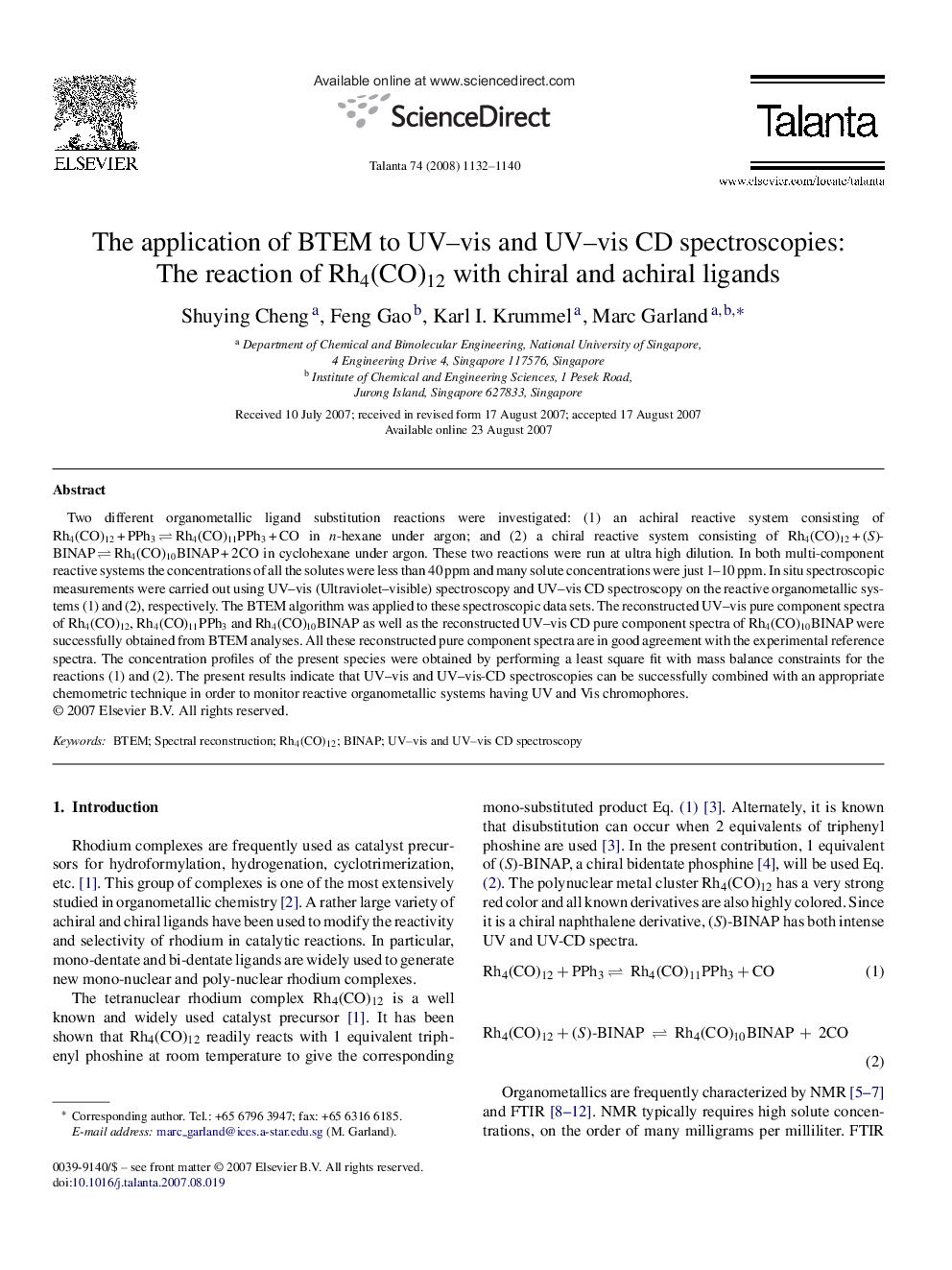| Article ID | Journal | Published Year | Pages | File Type |
|---|---|---|---|---|
| 1244498 | Talanta | 2008 | 9 Pages |
Two different organometallic ligand substitution reactions were investigated: (1) an achiral reactive system consisting of Rh4(CO)12 + PPh3 ⇌ Rh4(CO)11PPh3 + CO in n-hexane under argon; and (2) a chiral reactive system consisting of Rh4(CO)12 + (S)-BINAP ⇌ Rh4(CO)10BINAP + 2CO in cyclohexane under argon. These two reactions were run at ultra high dilution. In both multi-component reactive systems the concentrations of all the solutes were less than 40 ppm and many solute concentrations were just 1–10 ppm. In situ spectroscopic measurements were carried out using UV–vis (Ultraviolet–visible) spectroscopy and UV–vis CD spectroscopy on the reactive organometallic systems (1) and (2), respectively. The BTEM algorithm was applied to these spectroscopic data sets. The reconstructed UV–vis pure component spectra of Rh4(CO)12, Rh4(CO)11PPh3 and Rh4(CO)10BINAP as well as the reconstructed UV–vis CD pure component spectra of Rh4(CO)10BINAP were successfully obtained from BTEM analyses. All these reconstructed pure component spectra are in good agreement with the experimental reference spectra. The concentration profiles of the present species were obtained by performing a least square fit with mass balance constraints for the reactions (1) and (2). The present results indicate that UV–vis and UV–vis-CD spectroscopies can be successfully combined with an appropriate chemometric technique in order to monitor reactive organometallic systems having UV and Vis chromophores.
